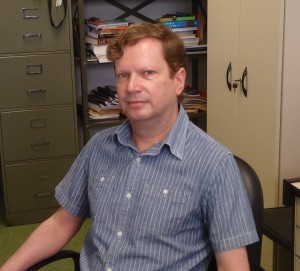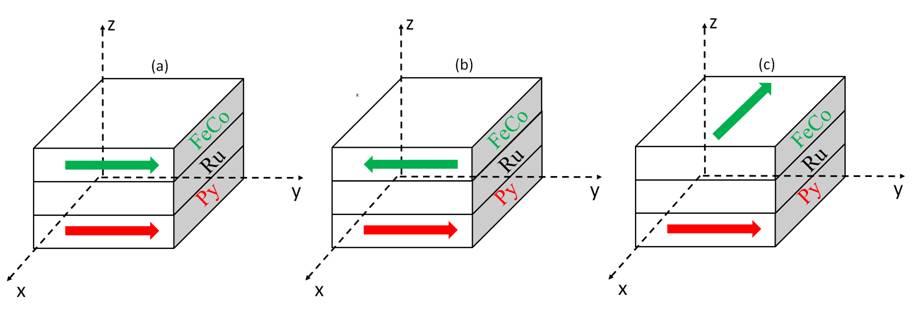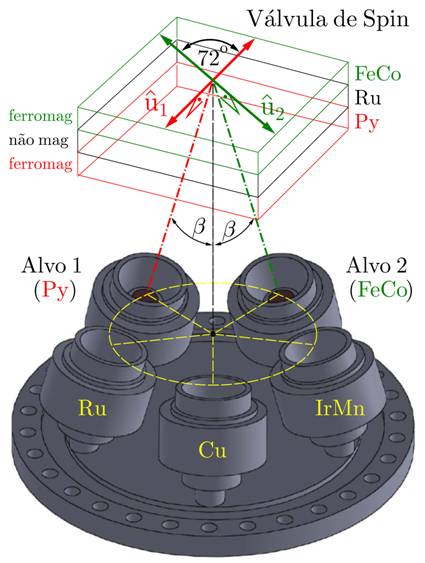 During his childhood and adolescence in Belo Horizonte, in the 1960s and 1970s, Helio Chacham had many incentives to become interested in science. After that, in higher education phase, Chacham first started Electrical Engineering but ended up choosing Physics. And that was the field he chose for his undergraduate, masters and doctoral degrees at the Federal University of Minas Gerais (UFMG).
During his childhood and adolescence in Belo Horizonte, in the 1960s and 1970s, Helio Chacham had many incentives to become interested in science. After that, in higher education phase, Chacham first started Electrical Engineering but ended up choosing Physics. And that was the field he chose for his undergraduate, masters and doctoral degrees at the Federal University of Minas Gerais (UFMG).
Shortly after completing his doctorate program, he joined the UFMG as Associate Professor, and afterwards he left for the United States to engage in a nearly two-year postdoctoral stage at the University of California in Berkeley. Back in Minas Gerais, between 1995 and 1997, he coordinated the graduate program in Physics at UFMG. From 1999 to 2000, he returned to the United States to engage in a second postdoctoral stage at the University of Texas in Austin. In 2004, he became a Full Professor at UFMG.
Over 30 years of scientific activity, professor Chacham has studied various materials with theoretical research based on the intensive use of computations, although in many opportunities he has worked in collaboration with experimental research groups. Early in his career, Chacham made important contributions to the study of properties of materials under ultra-high pressure. Since the mid-1990s, the researcher has dedicated himself, together with his group and collaborators, to predicting, verifying and explaining phenomena occurring in nanomaterials and two-dimensional materials, also making significant contributions on the same subject.
Currently aged 55, Helio Chacham is a level 1A productivity fellow (the highest level) at the Brazilian National Research Foundation – CNPq. He is the author of around 100 papers published in international peer review journals, which have over 1,800 citations. Chacham is the sub-coordinator of the National Institute of Science and Technology (INCT) of Carbon Nanomaterials. In December 2014, he was elected member of the Brazilian Science Academy (ABC).
Below is an interview with the scientist.
SBPMat newsletter: – How did you become interested in science? What led you to become a scientist and to work in Condensed Matter Physics?
Helio Chacham – My childhood was during the 60s and 70s, a time when there was great interest in science and technology – in part due to the space race and the man going to the moon. As a child and teenager, I always had access to science books (I remember “The Universe” by Isaac Asimov) and also science fiction books (also several by Asimov). At this time I also collected science experiment kits that were sold at newsstands – they were great kits with materials and instructions for experiments, also including small texts on scientists associated with the experiments. The schools I attended as from the 5th grade (both linked to the Federal University of Minas Gerais, UFMG) had good laboratories and good science teachers, which also encouraged me in that direction.
Upon my entry at the University (UFMG), I started as an Electrical Engineering student, but after the first year, I found that my biggest interest was in the fields of Physics and Computer Science. So I switched to the Physics course and meanwhile, for some time, I performed research in Computer Science. Then I was accepted in master´s courses in both – Physics and Computer Science – and ended up choosing the former. Since then, I have devoted myself to research in Condensed Matter Physics, perhaps because it is somehow related to my previous interests (Engineering and Computer Science).
SBPMat newsletter: – In your own assessment, what are your main contributions to the field of Materials?
Helio Chacham – In the 90s I devoted myself primarily to theoretical investigation of properties of materials under ultra-high pressure. These properties are relevant, on the one hand, under the academic point of view, because they allow investigating conditions similar to those of planetary interiors. In addition, these properties determine the limits of hardness of materials, such as the diamond. My largest contributions in this field were the determination of the pressure above which hydrogen becomes a metal – which occurs within Jupiter – and the theoretical determination of one of the diamond hardness measurements, the optimum shear strength.
Since the mid-90s, I started a research line on nanomaterials. This has been one of the most active areas of research in materials since the discovery of fullerenes and carbon nanotubes. My first contributions in the area, in collaboration with students, were predicting morphologies of boron nitride fullerenes and predicting the transformation of electronic properties of carbon nanotube – from insulating into metallic – when subjected to compression. The latter phenomenon was only experimentally demonstrated several years later, in a collaborative work with experimental researchers in my own department – the UFMG Physics Department. These theoretical/experimental collaborations have had a fruitful continuing so far, which has allowed us to predict, verify and explain various new phenomena in carbon nanotubes, graphene and two-dimensional materials, phenomena such as: the negative dynamics compressibility in graphene; wrinkle crystallization in boron nitride; and talc exfoliation up to the single layer boundary, similar to that of the graphene, and determination of properties of this new two-dimensional material.
During all of these projects I was always concerned in training masters´ and doctors, whose theses dealt with electronic and structural properties of nanotubes, fullerenes, DNA, nanoparticles, nanowires, graphene and other two-dimensional materials. These former students are now professors and researchers at UFMG and other universities, and have carried out several projects, mainly in the nanomaterials field.
SBPMat newsletter: – Last year you were elected member of the Brazilian Science Academy (ABC). What that means to you? How do you see your role within the ABC?
Helio Chacham – I deeply appreciate the support of my colleagues of the Academy in the election. I will take office in May, and then, will be able to seek ways to contribute with ABC, whether by participating in committees or in specific projects of the Academy, or by collaborating with Science Academies in other countries, one of which I have already participated (Brazil/India) before joining as a member. As I have been providing service to the community, whether, for example, as a member of the advisory committee of the CNPq or by coordinating projects in nanomaterials, I believe that my election will allow me to continue to contribute with the research community in many ways.
SBPMat newsletter: – Leave a message for our readers who are starting their careers as scientists.
Helio Chacham: – Based on my professional experience so far, I may be able to give some advice – which can be useful or not depending on the personality of each person, of course:
a) Work on what you really enjoy – the researcher’s career is one of the few that allow you to do so.
b) Search research areas with many issues to be solved, or new materials being produced, and which are consistent with item (a) above. For that matter, it is important to always keep up with scientific literature.
c) Master the methods you use as deeply as possible. That will allow you to attack difficult and important issues.
d) Always be willing to study and learn new methods. That will give you the flexibility and the ability to search for new issues and research areas, as well as to collaborate with researchers using other methodologies. Science changes continuously and constantly.


